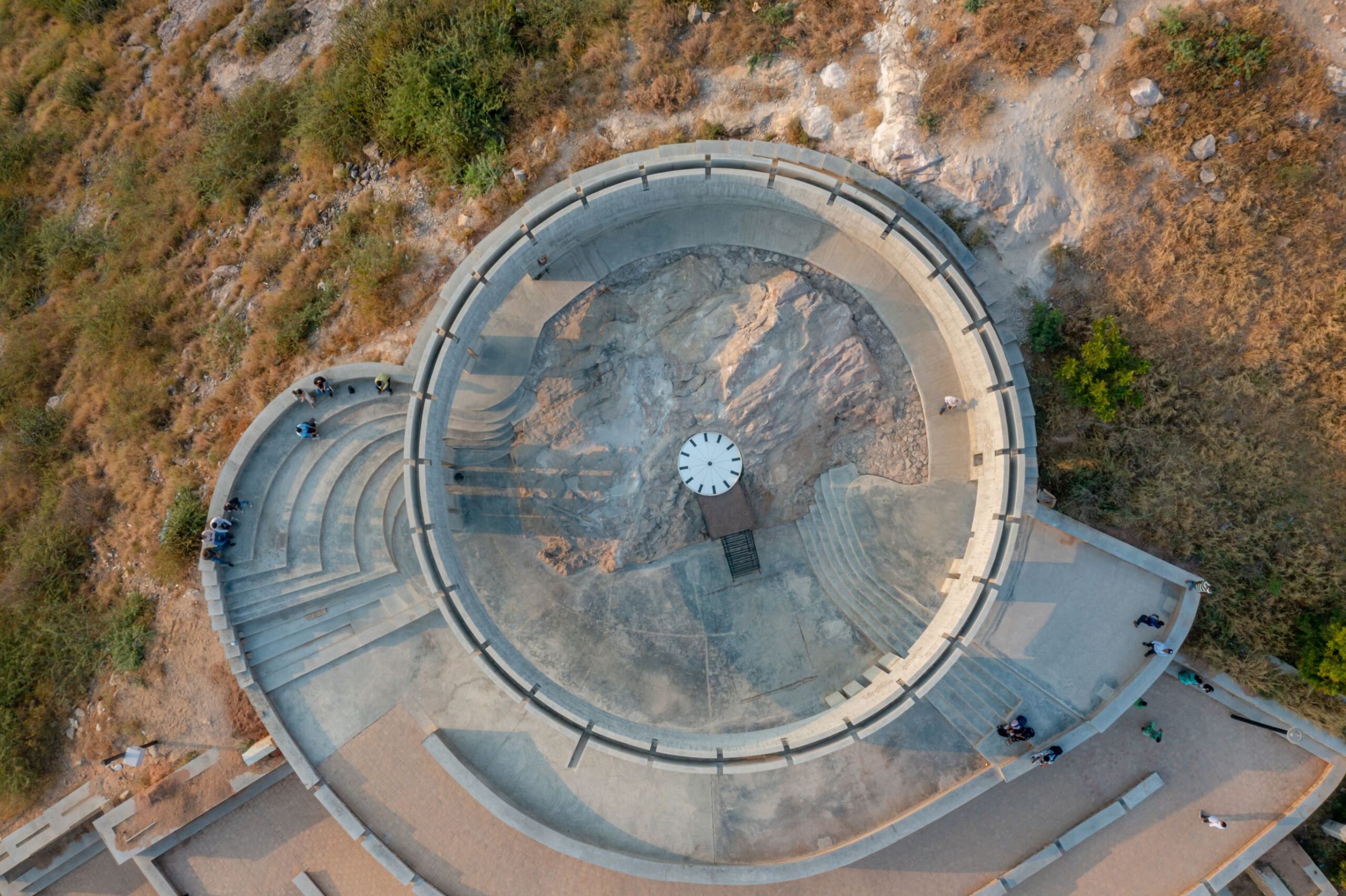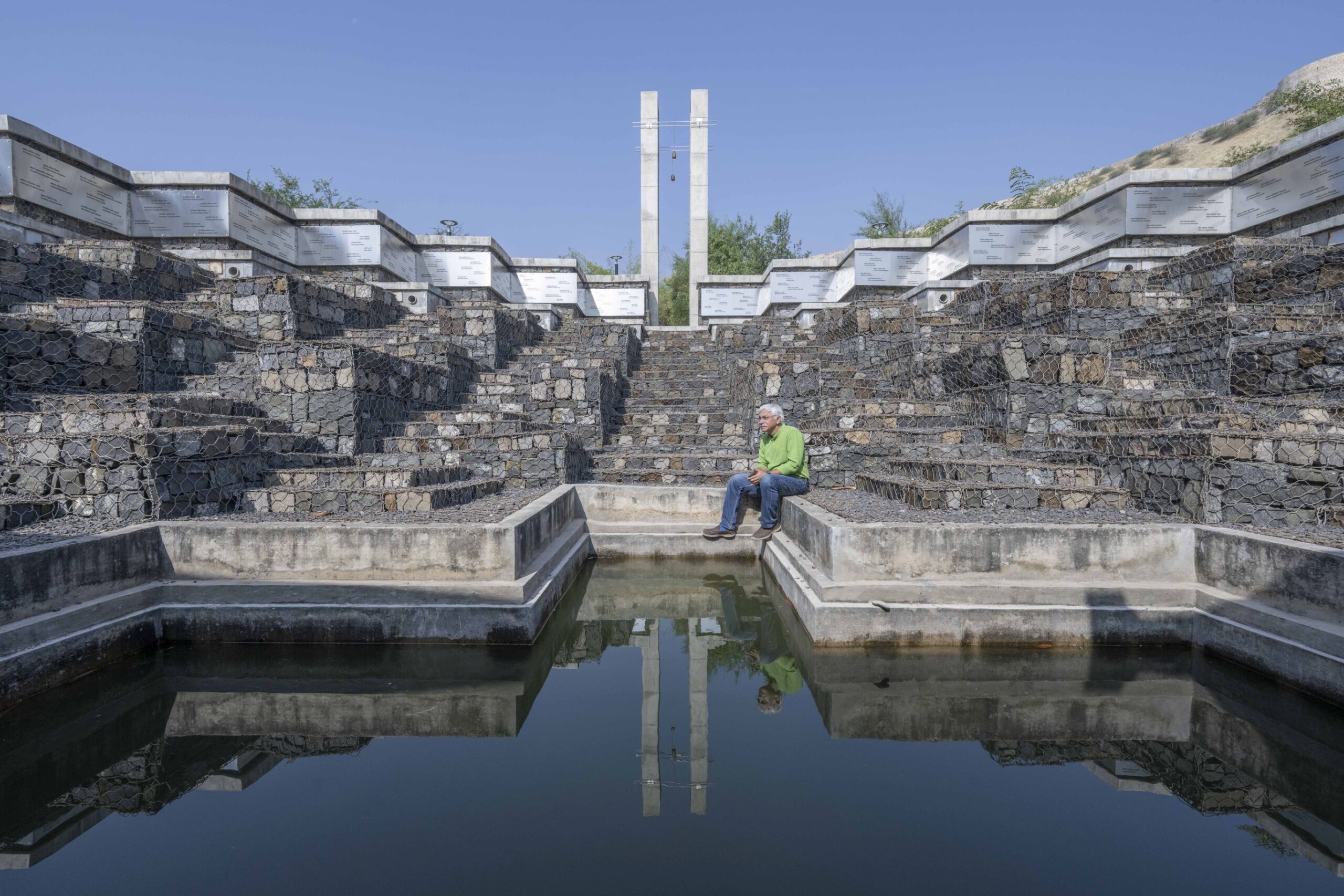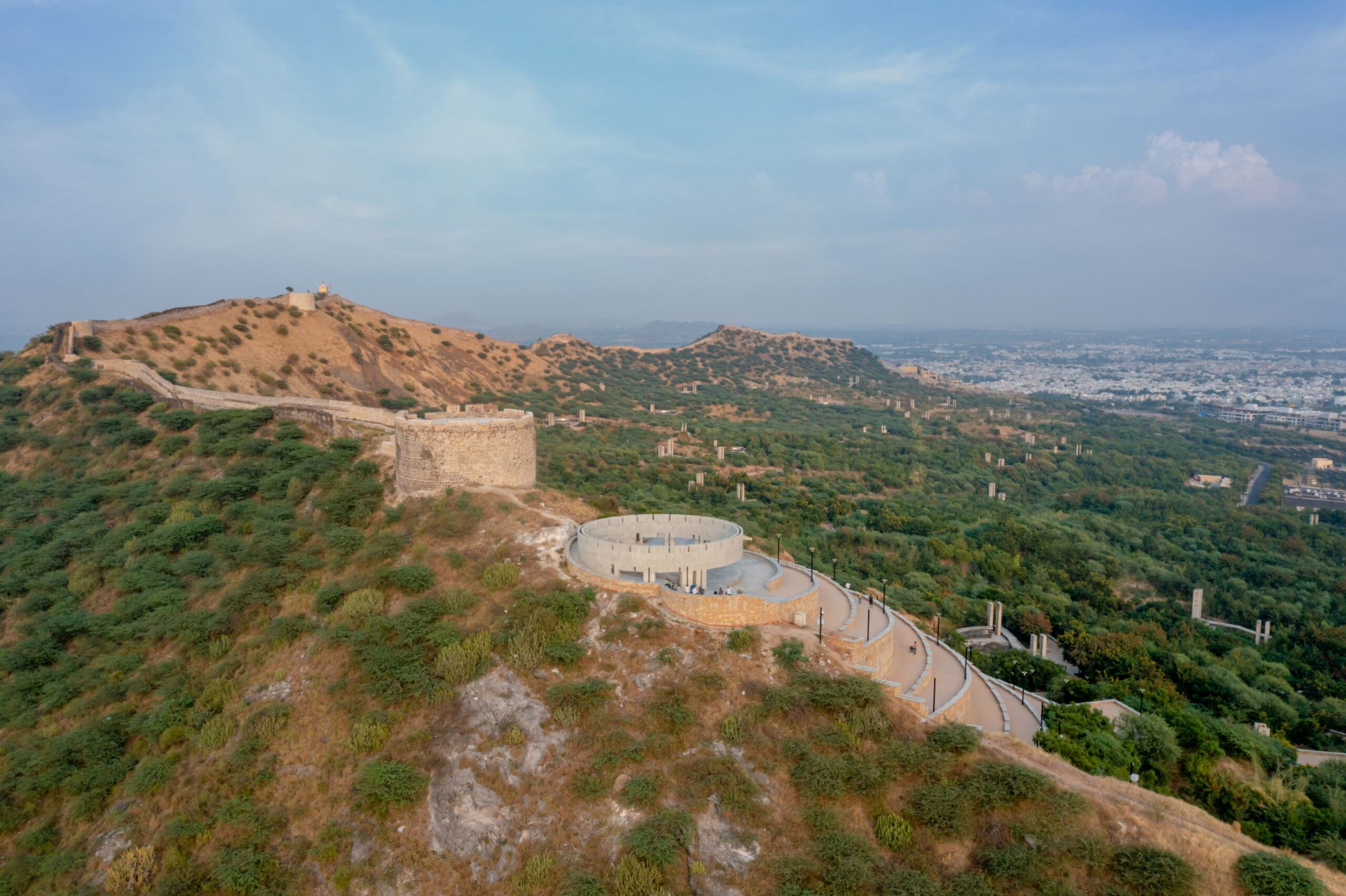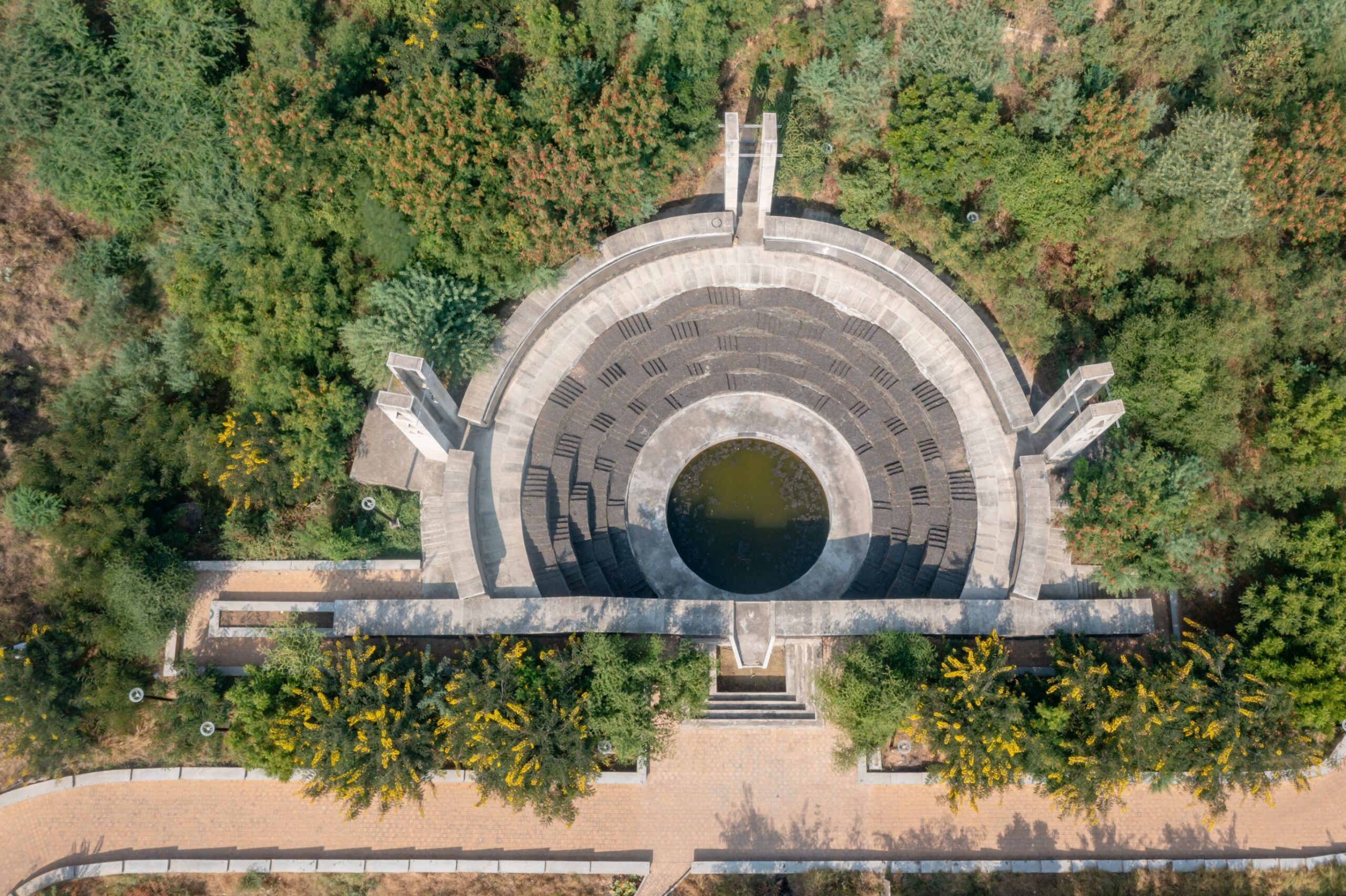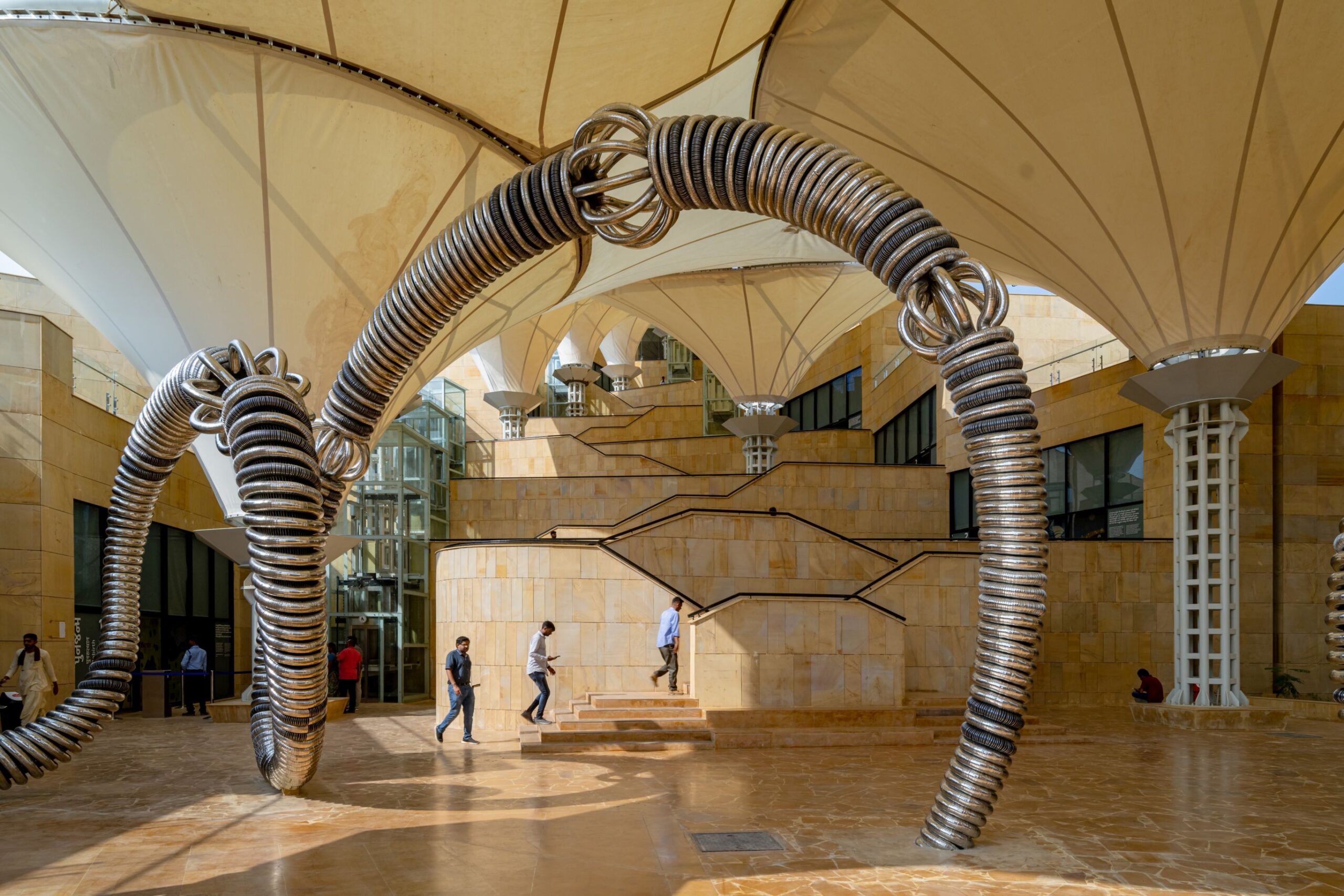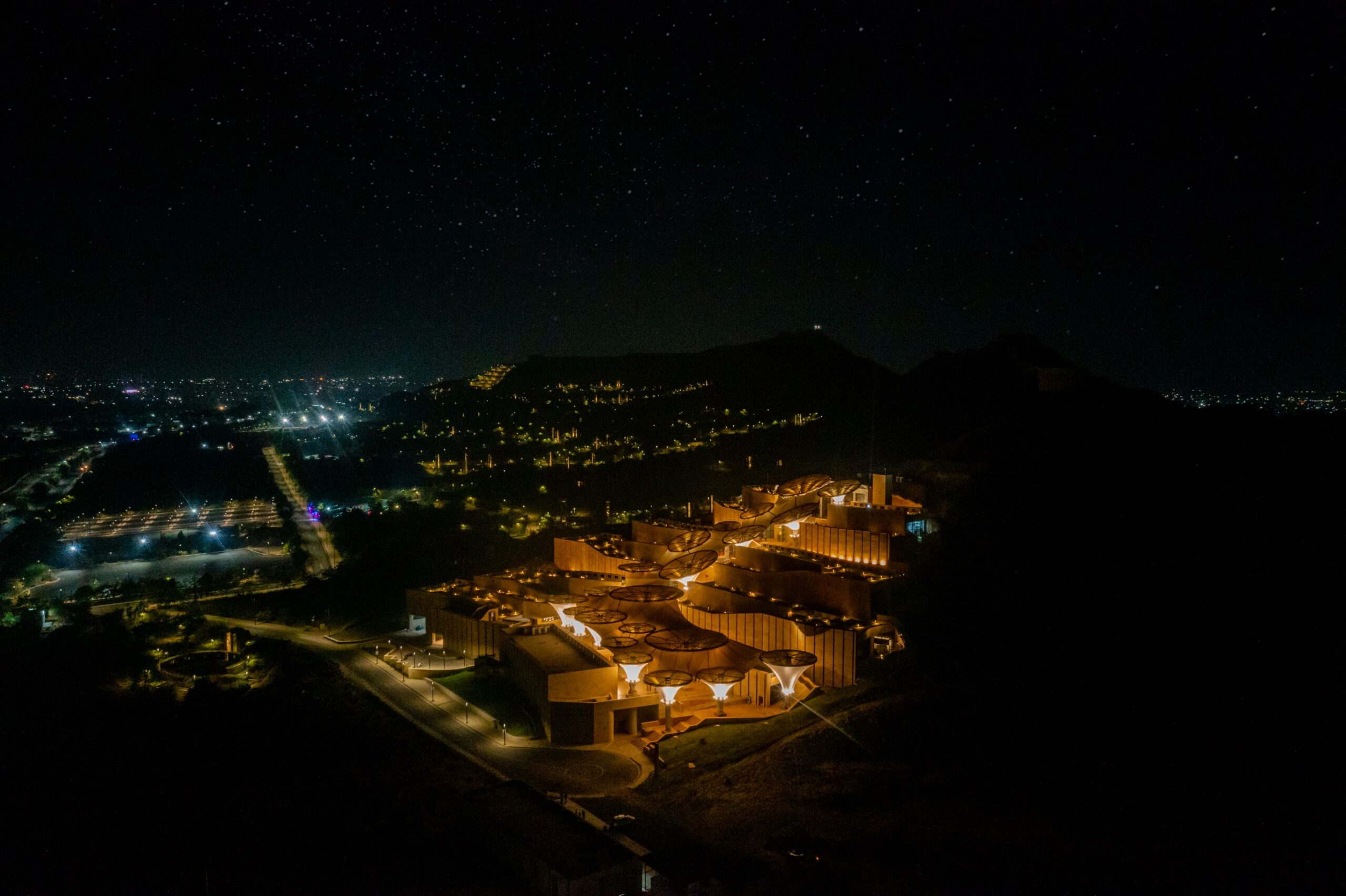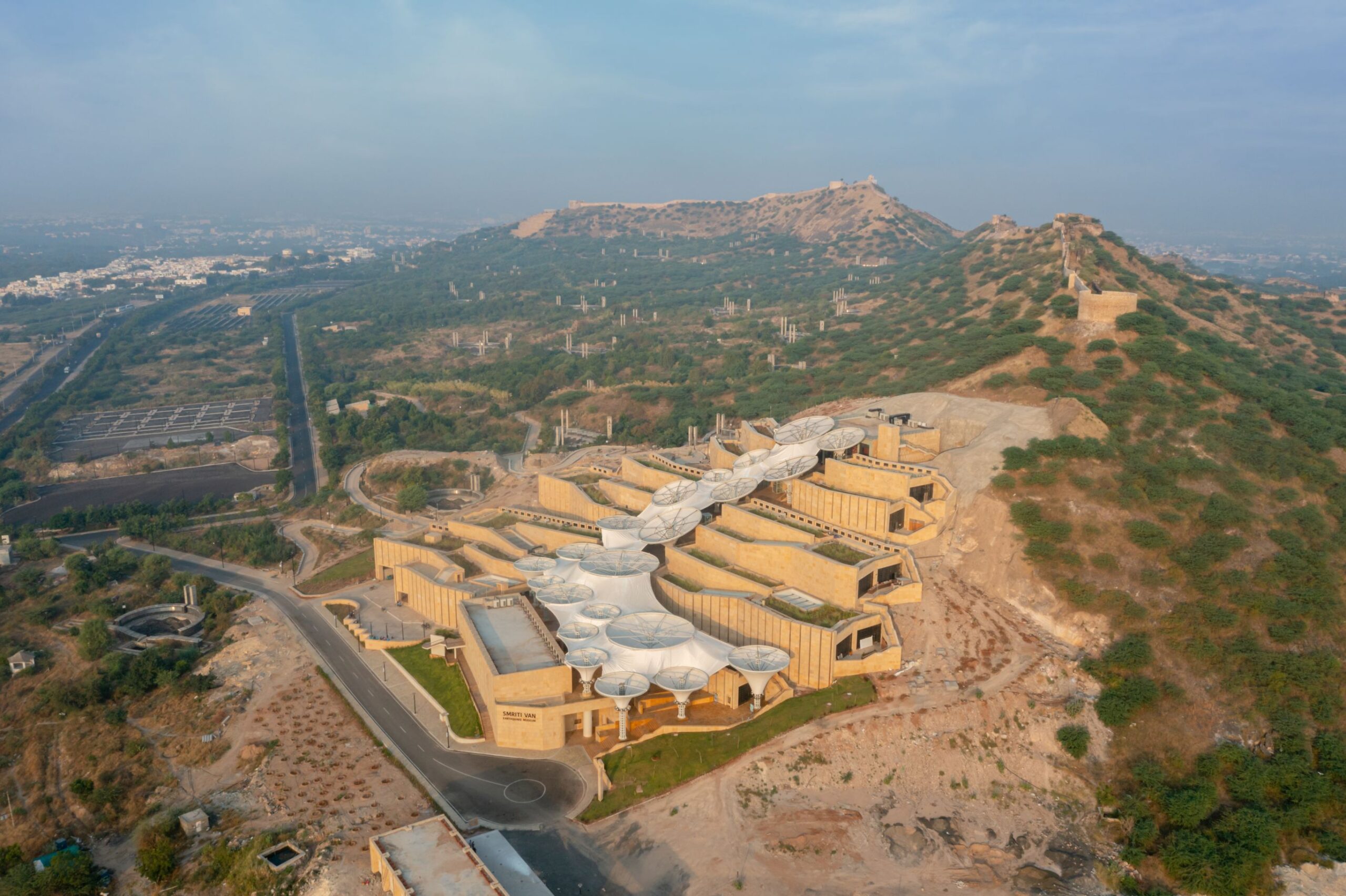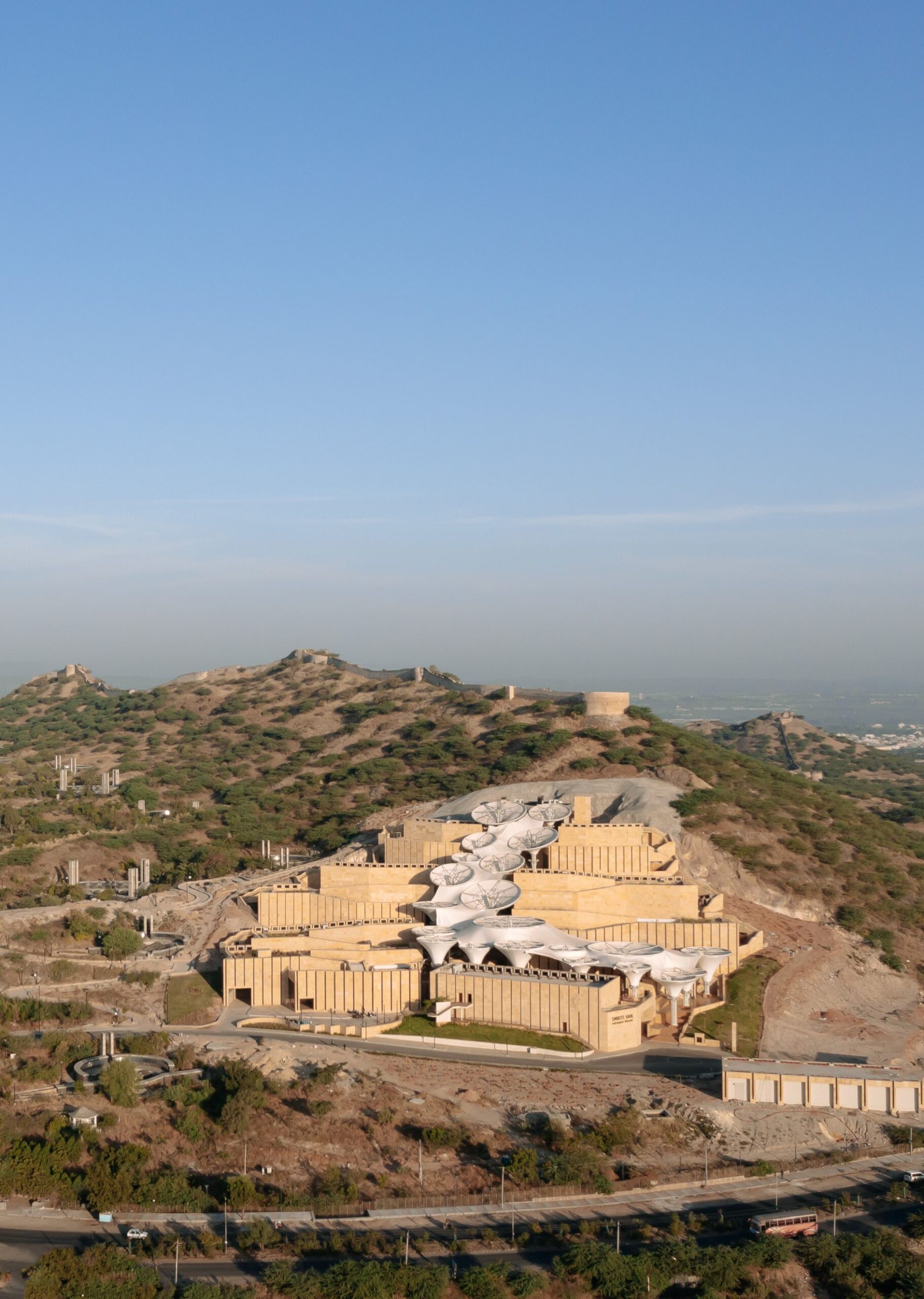
Smritivan, Bhuj, by Vastu Shilpa Consultants
GUJARAT EARTHQUAKE
In the early hours of January 26,2001, an earthquake that lasted for but a few seconds in the state of Gujarat wiped out 13,805 lives and with that destroyed property and infrastructure worth billions.
This earthquake was only the most recent of several disasters, among cyclones and droughts, that this region is prone to. A culture of resilience has now been imbibed in the land that traces its roots to the Harappan Civilization anchored in the Dholavira Excavations from 4500 years ago.
KUTCH (Tortoise)
The region derives its name from the shape and morphology of the land claiming that a geological fold brought the ‘tortoise’ out of the sea! The central ridge that runs from east to west, on which the town of Bhuj is situated forms the hump of the tortoise. This ridge created a gradient for the rivers to flow south and north into the sea.
For much of its geological history, Kutch was an island, but in the 12th century, it had its northern sea border cut off by tectonic shifts, leaving the section of water to dry out and turn into what is today a vast white desert – The Rann. Kutch is still virtually an island, as it is surrounded by the Arabian Sea in the west; the Gulf of Kutch in south and southeast and Rann of Kutch in north and northeast. Kutch’s ecology, economy, culture, rituals, social structure, festivals and struggle for survival all revolves around water, interlinked with water and interdependent on water.
REGENERATION
All over the world, cultures commemorate their loss in disasters, by keeping relics, memorials and building museums for remembrance of what has past. Our short but precise brief by the then Chief minister of Gujarat, Shri Narendra Modi was to “Plant a tree for each victim”. Over time, we concluded and agreed that this very limited brief with the idea of planting a tree was brilliant!
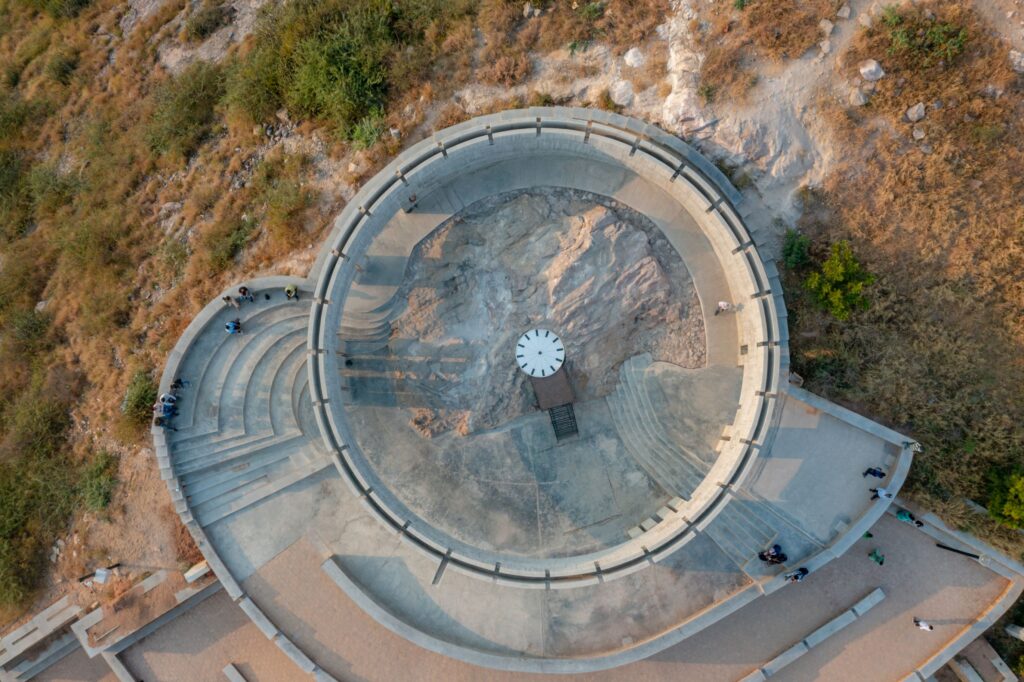
It symbolized rebirth, renewal and hope, the beginning of the journey of life once again. How better to commemorate loss of human life than through a symbolic act of regeneration? The planting of trees also suggested the making of a forest. A bio-diverse self-sustaining ecosystem that would over time need very little maintenance. The forest of trees also symbolizes the diversity of people.
For us this journey suggested two intertwined paths, one of the families of the victims who would come to this garden as pilgrims in remembrance of their loved ones and the other one – the path of sustenance of the tree.
In all religions, pilgrimages are an essential part of the journey of self-discovery. We have often heard the phrase, “life is a journey”!
For the sustenance of the trees it is necessary to understand very carefully how natural systems work. How land, water, air, birds and insects in conjunction are the agents of nature to make complex ecological and environmental systems. It is only necessary to initially assist nature and then after the first few years nature takes over. This assistance is to identify local species, identify the paths that water flows, the soil and nutrients that the water collects on its journey and most importantly identify the places where the water can be collected to leak into the earth. The monsoon and its collection and eventual discharge to feed the trees is one kind of journey – a journey of nourishment, perpetuation and continuity, a journey of hope and delight.
Thus, the other journey was to link these leaking reservoirs where the names of the victims would be enshrined, by paths that the pilgrims would traverse and eventually rest, the views they would encounter, the horizon they would contemplate and eventually the space in which reflection and contemplation may perhaps happen. These two intertwined paths became the basis of our design.
As the park matures it will become a place of not only pilgrimage but also a place of leisure and recreation for the growing population of Bhuj. Much like the Central Park in New York, a breathing lung for the city and a place of reflection and repose for all citizens.
The master plan envisages 81 reservoirs to collect the runoff of the Bhujiyo Dungar. The overflow of each reservoir goes to the next and eventually into a series of wetlands along the periphery of the site. It is expected that the wells outside our site will benefit from this recharge and their water levels increase. It is also expected that water that used to overflow from the site and flood the surrounding area in the monsoons will now be better contained especially considering that the city has grown all around the site and the land is getting occupied by buildings.
A timeless knowledge is applied at Smriti Van, something that has always been done here: the water flowing is intercepted on its way and stored. The reservoirs are of different dimensions and forms in relation with the slope and the shape of the precise place where they are installed.
RECHARGE RESERVOIRS
The idea of democracy and plurality is reflected in the choice of building numerous small reservoirs instead of one or two large reservoirs. Because they are small, building them is relatively easy and cheap in an earthquake zone five. It also means that they can be built in phases, over time. Most importantly, the region represented by a reservoir within the neighboring villages, encourages a closer social bond amongst them, a sense of ownership for the bereaved families.
The reservoirs are made of gabions which are entirely without mortar and thus allow for the arresting of rain water of the watersheds but allow it to dissipate into the ground slowly, thus allowing the root system of the trees to draw upon it. Over time, the gaps in the stone are filled up by the alluvium that the water brings in and seeds trapped in it sprout plants. This not only consolidates the gabion structure but in time almost effaces the built to merge and become one with the landscape
GROWTH
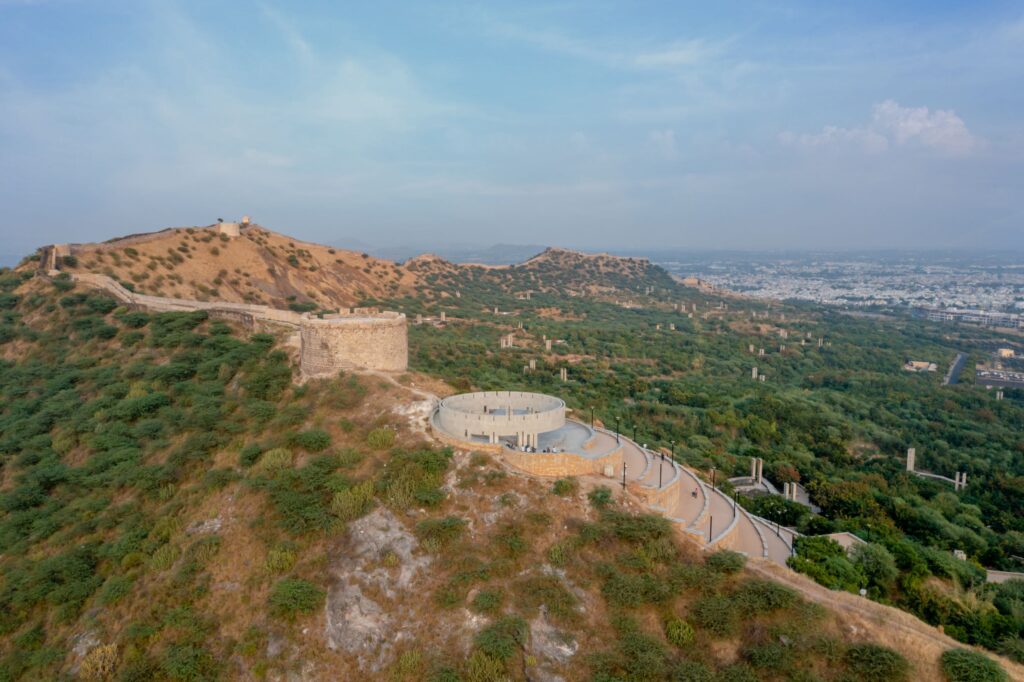
The experience one has at Smriti Van may change over time. Smritivan is neither a monolithic memorial nor a structured garden. The project was intended to merely provide the initial guidance needed for both vegetation and the reservoirs. The rest is left to Nature. Nature, as you know, has its own process of uncontrollable and spontaneous growth. Where there is loss, there is regeneration. Even in death, there is rebirth.
With time, the diverse vegetation will grow into an entire ecosystem which will merge with the built forms of the Recharge Reservoirs, thus eventually engulfing them into one cohesive maze of green and blue. The forest grows as a symbol of resilience; for that is an inherent quality of the people of Kutch who have been subject to the hardships of Nature through the ages.
With seasons, leaves will come and go, and fruits and flowers will blossom; each unique like the irreplaceable lives lost. Of them, only memories remain and these echo through the forest; a sanctuary for all those who arrive here in search of remembrance or perhaps, to hear the silence and contemplate.
SUN POINT
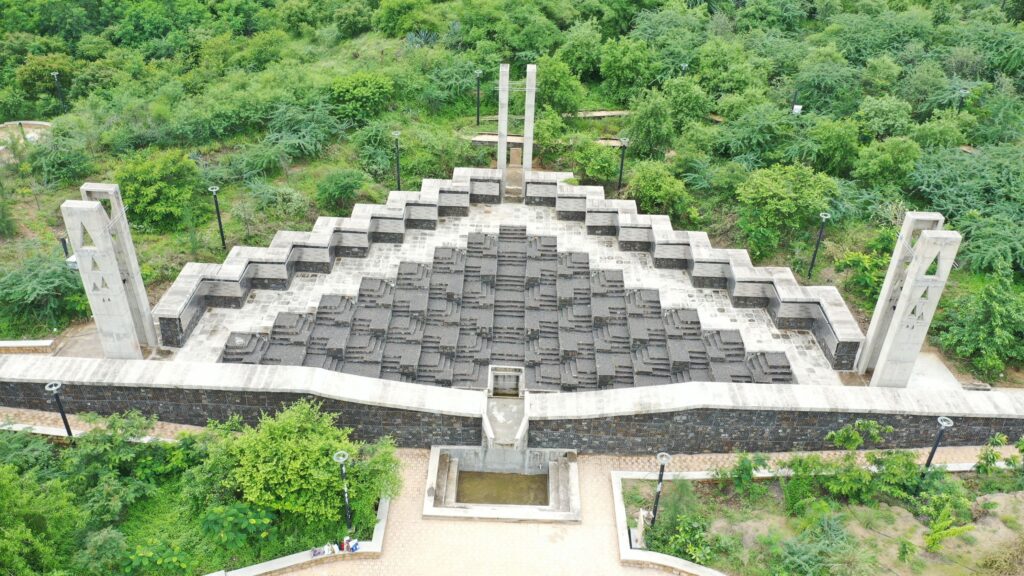
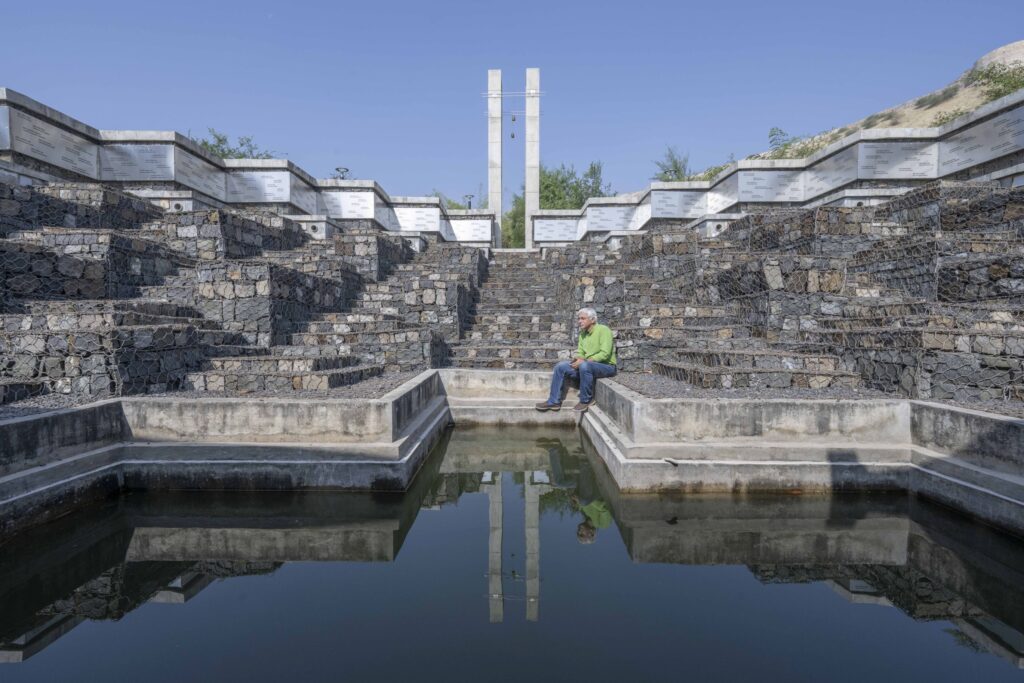
The sun point at the Smritivan Earthquake Memorial, perched over the hills silently looks down over the city from it’s crest just below the ancient fort wall leading to the famous Bhujang Dev Temple. From the sun point, one looks over the many recharge reservoirs piercing into the fabric of the hill.
All the meandering paths between the reservoirs finally lead to the one that ascends the hill of the sun point.
The carvings and slits in the circular crown of the structure anchors a joyful journey through the lunisolar calendar with it’s festivals and special days of the year. The cuts in the solid body share a dialogue with the sun rays creating a symbolic play of light and shadow pertaining to the significance of the day.
MUSEUM
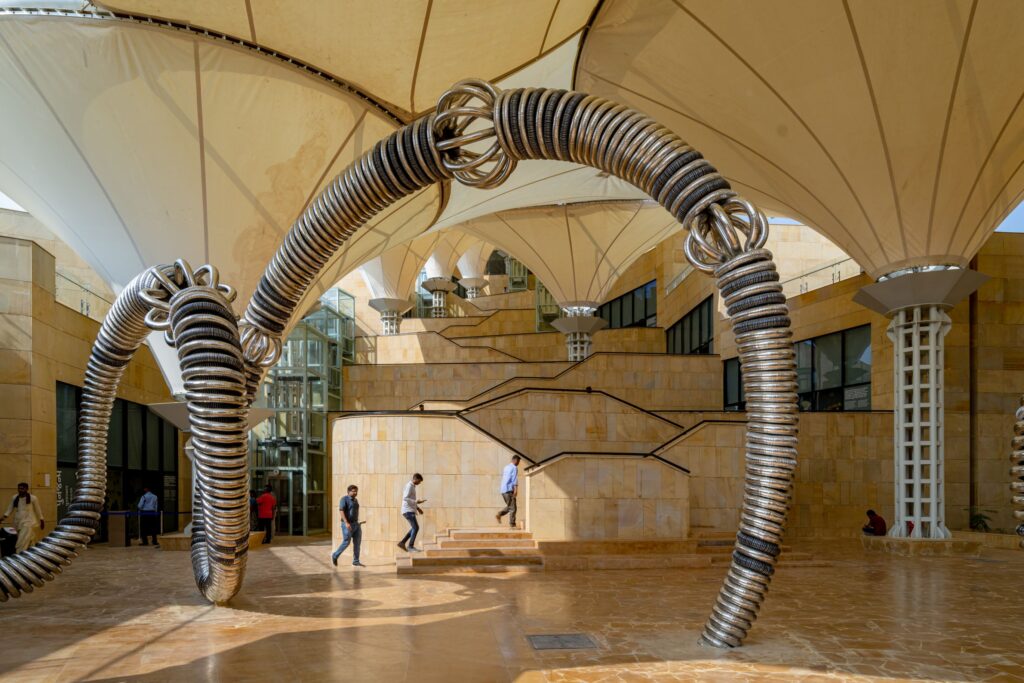
The museum anchors its journey within the city of Bhuj, showcasing its unique heritage, culture and crafts and further connects to Kutch’s many villages and wild life sanctuaries. The proposed museum traces the roots of Kutch’s many crafts and skills and is thematically distributed in the many galleries that house it. These galleries are spread along a central spine rising almost 50 meters from the base of the hill where the museum is located. This central spine is like a verandah and allows public events to happen even when the museum is closed. The architectural complex and Plazas lay along the terrain of the Bhujia Hills and give the user the experience of a snaking path to the top. Here terraces and volumes are linked by these open plazas.

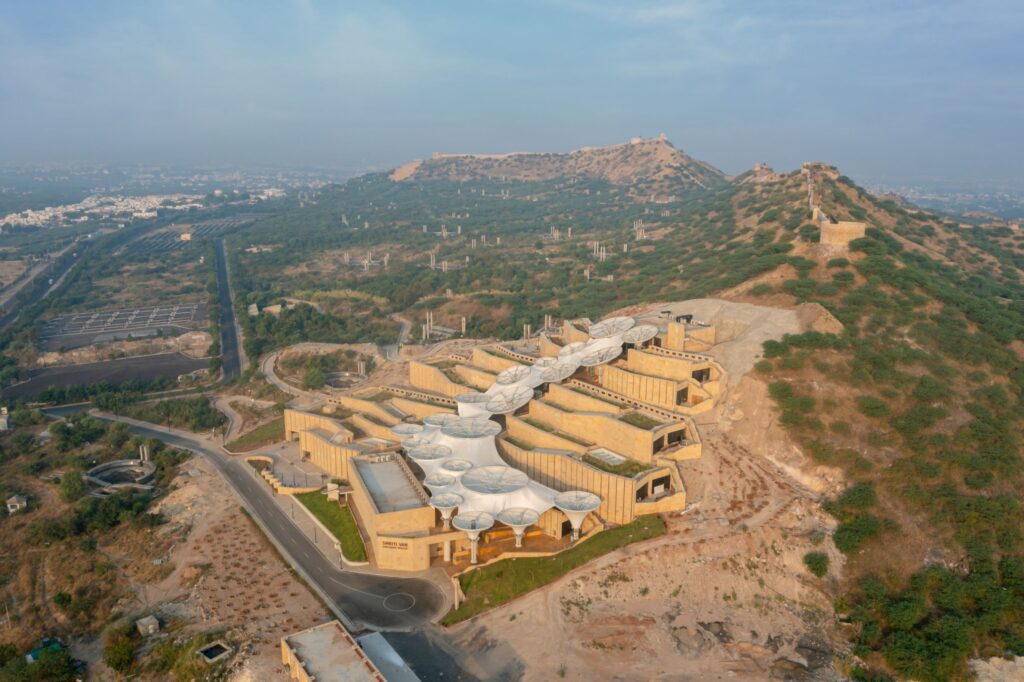

Within the 470 acre site there is also a Conference and Art center that is proposed to showcase the industry and crafts of Kutch. There is also a Library and Documentation center proposed to document stories and myths of Kutch, folk music and the musical instruments of the region. A public plaza for the Nagpanchami festival is also part of the master plan.
Gallery
